Let’s just take it as a given that American Girl characters are queer icons. I’m a Molly, if you couldn’t tell, but also with strong Kit tendencies. I’m saving my “American Girl Made Me Gay” essay for another day, but let’s be clear that that’s where I’m coming from.
Thanks to the incredible work of Allison Horrocks and Mary Mahoney at the acclaimed American Girls podcast, I’ve been thinking a lot about how my childhood fascination with the historical American Girl books shaped my lifelong love of history (the early 20th century in particular). In wondering how these stories shaped the person I’ve become, I’ve also become curious about how the characters I love might have grown up. These stories, for me, are so closely connected to their chronological settings; Molly is the 1940s girl, Kit is the 1930s girl, etc, and imagining them older, in subsequent decades, lets these vibrant characters expand beyond their original narrative confines.
So let’s imagine these adorable queer icons as they’d be turning 18, maybe figuring things out, maybe beginning to search for queer community. What community spaces would have been available to them as they entered adulthood? What bars would they be sneaking into? What might their queer lives have been like?
Samantha Parkington — born 1895, turns 18 in 1913
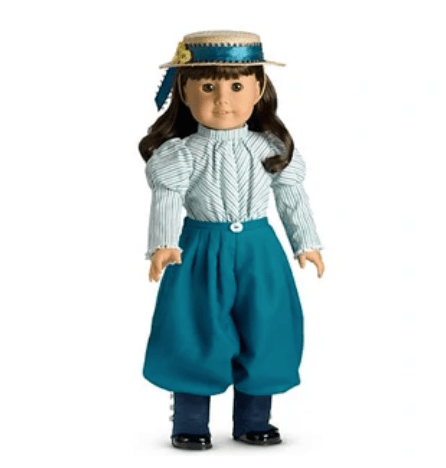
Because Samantha’s original books are set in 1904, I’m counting her as my first 20th century girl, and what a helluva start to the century she represents. A lot of Samantha nostalgia centers her luxurious accessories, but beneath all the frills, Samantha is the badass femme queen we all deserve. Growing up with her bicycling suffragette Aunt Cornelia, how could Samantha become anything other than a legend? Her civic-minded progressive labor politics are central to her story and I can see her growing up to do further community outreach and advocacy work, probably as one of those SpinstersTM who totally had a “historians will say they were friends” kind of partnership. As historian Lillian Faderman notes, at this point in time there weren’t many bars where women could go; Samantha would more likely have found her queer family at a ladies’ club or activist circle. However, by her mid-to-late twenties, I know in my heart Samantha would’ve been sneaking off to speakeasies with her, ahem, ~best friend~ Nellie and reading Radclyffe Hall.
Rebecca — born 1905, turns 18 in 1923
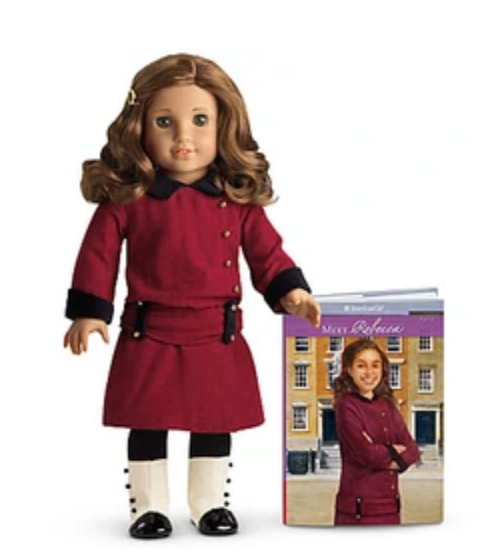
Rebecca wasn’t yet part of the story when I was a kid, but god I wish I’d had these books when I was in the thick of my A Tree Grows in Brooklyn phase. Rebecca grew up in New York during peak Edith-Wharton era, and would be 18 just as the 20s were really starting to roar. Prohibition was in effect from 1920-1933, but let’s be real: this girl’s too resourceful not to find the best house parties and speakeasies. By the early 1920s, bars in the West Village were growing devoted gay clientele, like one which in 1929 would be renamed Marie’s Crisis (and which remains a beloved gay piano bar.) However, I like to imagine Rebecca in community with Eve Adams, subject of a superb recent biography by queer historian Jonathan Ned Katz. Eve Adams was a Jewish immigrant from Poland who traveled around America distributing radical leftist literature, and whose 1925 book Lesbian Love was burned for being ~indecent~. Additionally, Eve Adams opened a salon and tearoom in Greenwich Village called Eve’s Hangout where queer community congregated — I picture Rebecca here, probably with a copy of The Autobiography of Alice B. Toklas by Gertrude Stein.
Kit Kittredge — born 1923, turns 18 in 1941
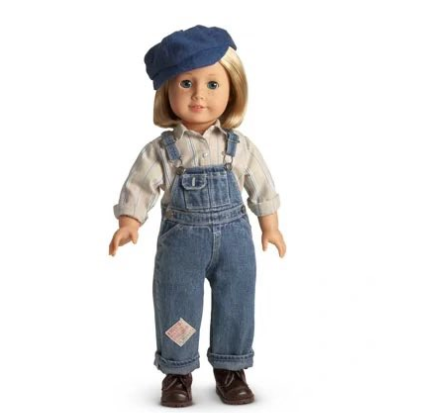
Oh Kit, rough-n-tumble butch queen of my heart. Typing up her own newspaper on a clattery typewriter, building a scooter out of fruit crates, playing baseball, and dressing as a boy to ride the rails and learn firsthand about Depression-era “hobo” culture, it’s safe to say we know that Kit grew up to be a badass. She’d be coming of age in wartime Cincinnati, when military necessity led to the town’s industrial boom. As a center of manufacturing, Kit would’ve had no trouble finding a job — can’t you picture her, Rosie-the-Riveter-style, slinging heavy machinery around and looking very at home in her shop floor coveralls? Especially during the war, working-class lesbians congregated at dive-ier bars, often close to the plants for an after-shift drink; this is the generation who would’ve been the elders in Stone Butch Blues. These bars haven’t received the level of historical preservation I think they deserve; since they so seldom advertised themselves as the de facto queer community centers they were, it’s hard to name for certain any specific institutions Kit might have frequented. However, Cincinnati’s current vibrant LGBTQ+ community from the 60s onward didn’t come from nothing. We know there must’ve been somewhere for Kit to get a drink and cruise for crushes after a long shift. By the time of Cincinnati’s first pride parade in 1973, Kit would have been 50 years old — a beloved butch elder, I imagine, at the front of the parade.
Nanea Mitchell — born 1932, turns 18 in 1950
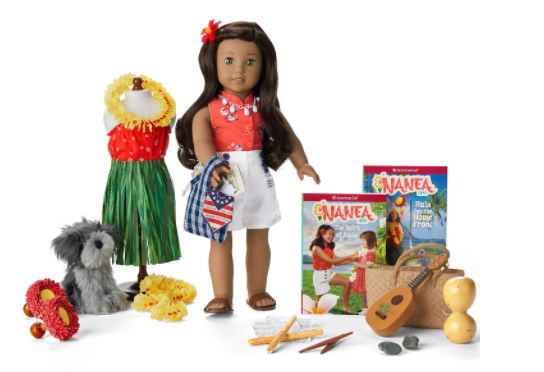
Nanea is Hawaiian, living in Honolulu during the Pearl Harbor attacks. I want to shout out here how great it is to see another indigenous character added to the lineup, and with such rich and attentive historical specificity. Nanea witnesses the attack directly herself; a large part of her plotline is about recovering from this trauma and from the ensuing separation from her best friend Lily, whose family is forced to the mainland by the enforcement of Japanese internment. Even against this harrowing backdrop, wartime Honolulu was a fascinating place — acclaimed female pilot Cornelia Fort was stationed there, teaching men how to fly, when she witnessed the Pearl Harbor attack from the air, and you better believe that those fantastic, fierce lady pilots were, ahem, yknow. Nanea herself is a creative, headstrong, often-impulsive girl with a penchant for Nancy Drew novels. (Did Nancy Drew make me gay? Probably not, but having a hot girl sidekick named George sure didn’t hurt the cause.) By the 1950s, I don’t doubt that teenage Nanea wouldn’t be having any trouble shaking up gay adventures. Especially in proximity to military bases like the ones in Honolulu, gay and lesbian bars had sprung up like clover; you can read all about them in Coming Out Under Fire, about how wildly gay the WWII-era forces were, and where some of the interviews were even contributed by lesbian former-WACs still living in Honolulu.
Molly McIntire — born 1934, turns 18 in 1952
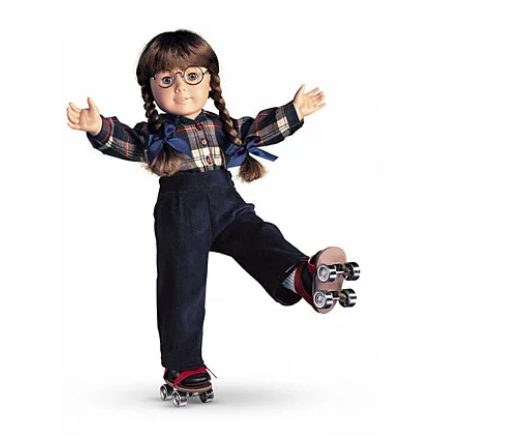
Molly’s stories are set in Jefferson, Illinois, which I take to mean Jefferson Township outside of Chicago; heading into the city, then, as an 18 year old, Molly would be walking into the thick of McCarthy-era vice raids and mob-controlled underground bars. (If you thought Molly would grow up into some straitlaced boomer, think again.) The Andersonville area of Chicago remains to this day a queer haven, but back in Molly’s day the scene looked rather different. This extensive entry in the Chicago Encyclopedia and this piece from the Chicago Tribune outline the context of the community Molly would’ve encountered, including the vibrant community led by Black LGBTQ+ people that coalesced on the South Side and included popular and long-standing mixed-race drag balls which lasted well into the 1950s. In addition to these gatherings, Molly’s main South Side bars would have probably been places like Mommy-O’s (what a name!) and The Fiesta, where she would’ve risked police surveillance or harassment, particularly if she butched it up beyond the law’s unofficial rule that people had to be wearing at least 3 items of clothing designated for their assigned sex. (May they roll in their graves at the sight of us now!). Nowadays, there are tours available of Chicago gay neighborhood history, and these interviews with patrons of Chicago’s lost lesbian bars give us a glimpse into the scene as it would’ve developed after Molly’s coming-of-age.
Maryellen Larkin — born 1945, turns 18 in 1963
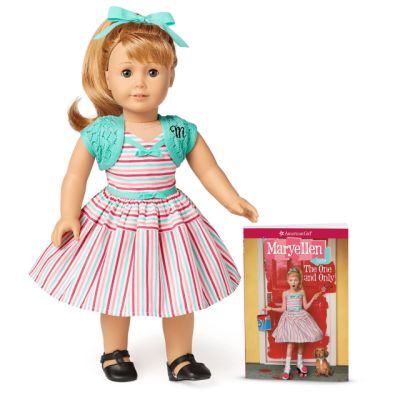
Maryellen is a more recent addition to the Historical Characters line, and I love her whole vibe. She’s a polio survivor, adventurous and creative and headstrong, and she works in her family’s seaside diner in Daytona Beach, Florida. This girl is a bartender in the making if ever I’ve seen one, complete with opinions about what goes on the jukebox! Over at Dishing with Mark and Carrie, local legends in the queer community have also compiled an informal, unverified, entirely delightful rundown of Florida Bars That Were. Most of these bars catered primarily to gay men, but they speak to a lively and long-standing queer community in Central Florida. About an hour away from Maryellen in Orlando, she’dve had options like those compiled here by the Florida LGBTQ+ Museum, including Palace, which opened in 1969 and later became home to Face to Face, aka Faces, the first bar for LGBTQ+ women identified in Central Florida. Maryellen might even have been around the same age as the belovedly eccentric mother in Kristen Arnett’s Gay Florida Masterpiece Mostly Dead Things, no? I bet we’d see some gay taxidermy at her bar.
Melody Ellison — born 1954, turns 18 in 1972
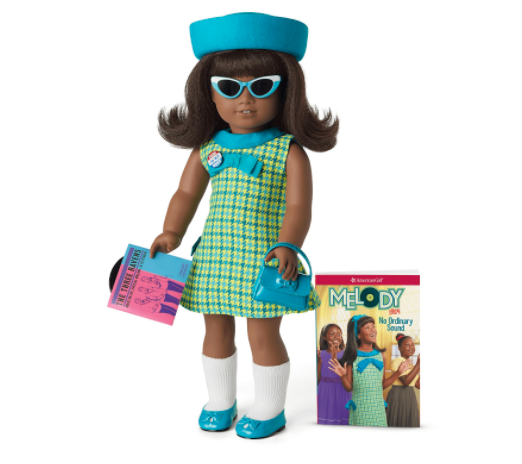
God, I wish Melody had been around when I was a kid! This is a girl raised on Motown, coming up in Detroit during its industrial boom, and already (look at that Mary Tyler Moore style outfit!) a pop culture icon. Where was Melody when I was making my dad blast Motown classics radio on the way to school? She and I love the same artists — Martha Reeves and the Vandellas, Marvin Gaye, and the like — and Motown was much like Hollywood in its draconian enforcement of straight femininity in its artist contracts despite the popularity of bands like The Supremes with openly queer fans. You can find out more about the queer Motown milieu in the delicious mystery novels by Cheryl Head, which feature a queer Black private investigator! By the 70s, however, white artists closely connected with the Motown crew like Dusty Springfield were publicly out, and the rise of disco was creating an environment more openly welcoming for queer artists of color. Black lesbian organizing was gaining momentum as well; while the Black Lesbian Caucus was based primarily in New York, their newsletters had national circulation, and groups like the Salsa Soul Sisters offered Black and Latinx women an alternative to often-racist and otherwise discriminatory bar spaces — groups and networks like these are where Melody might’ve gotten her best recommendations! Over at this interactive map, you can watch the expansion (and, sadly, contraction) of the Detroit gay bar scene, based on data assembled by historian Dr. Tim Retzloff.
Julie Albright — born 1966, turns 18 in 1984
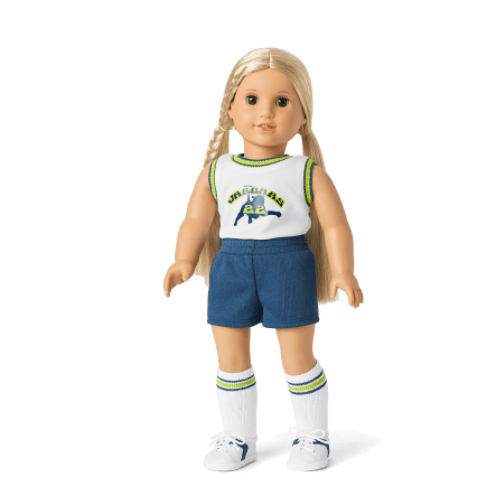
Oh, this sweet little long-hair-butch San Francisco sports gay. By the time Julie would’ve been coming out, the scene documented in historian Nan Alamilla Boyd’s iconic book Wide Open Town would have been a thing of the past and San Francisco’s icon Mona’s (440 Broadway, ‘Where Girls Will Be Boys’) which is often credited as the first openly lesbian bar in America would have been closed for a while. We can’t forget that the mid-eighties would’ve been right as the AIDS crisis accelerated, and a team player like Julie wouldn’t have been able to escape the urgency of this moment. However, in addition to community organizing, and queer women’s volunteer efforts to support HIV and AIDS patients, I like to imagine her in such options as Amelia’s, Wild Side West, and the iconic Maud’s, subject of the magnificent and profound documentary Last Call at Maud’s that you can stream for free online via your local library. Personally, I’m betting that Julie would’ve been fielding Maud’s softball and basketball teams, and driving the girls to the bar after practice in her beat-up van. She strikes me as a cold beer kind of gal.
Courtney — born 1976, turns 18 in 1994
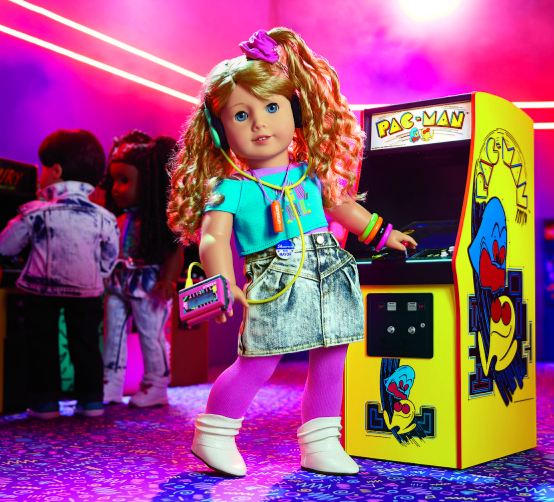
So, like, we know they made Courtney her own doll-sized American Girl doll (Courtney’s a Molly; same, girl, same) — are they going to make Courtney little doll-sized copies of Dykes to Watch Out For too? Courtney grew up in Southern California in the 80s, and by the mid-90s I bet she’d have found her way to Los Angeles, which for a time was an unofficial capital of lesbian bars. The longest-running appears to be The Palms in West Hollywood (which operated from the 60s until its closure in 2013), and many more from that neighborhood are represented in the holdings of the local June Mazer Lesbian Archives, where oral histories have helped patch together this history of earlier bars in the area dating back to the 1950s. Latinx and Black lesbians, however, congregated in East LA, where bars like Kitty’s are immortalized by the ONE Archive LGBTQ+ Research fellows. The number of such bars over all of LA has plummeted, sadly; this 2019 article by a local queer paper and this one from the following year highlight the erosion brought on by gentrification and other forces.
I’m just getting started — queer history didn’t begin in the 20th century, and the 18th and 19th century American Girl characters deserve their queer lives imagined too. Keep your eyes peeled for Part 2 featuring beloved characters Kaya, Felicity, Caroline, Josefina, Kirsten, and Addy!
In the meantime, if you’d like more information about the past, present, and future of LGBTQ+ bars and community spaces, I recommend searching out a secondhand copy of the Our Happy Hours anthology, edited by LGBTQ+ literary legend Lee Lynch in the aftermath of the Pulse Shooting, for its firsthand accounts. More wonderful anecdotes can be found in this VICE documentary done by JD Samson, and in the recent Lesbian Bar Project committed to supporting and promoting the remaining bars across the country. If you’ve got any historical insights or modern-day recommendations for queer bars and community spaces worth supporting, lemme know all about what I’m missing out on in the comments!

This is possibly the greatest article on AS of all time. I LOVE Eve Adams so much and read her biography (which! includes! Lesbian! Loves! in it! The actual book that was banned and got her deported!).
I read about her in Hugh Ryan’s When Brooklyn was Queer, which is also great.
I cannot wait for part 2!
gonna screenshot this comment and wallpaper the inside of my brain with it. thanks so much for reading!
This is the kind of content that only AS would ever publish, and it is so amazing, and so important, and I’m so excited that you’re part of the team, Yashwina. <3
Seconded!
oh my heart, you guyyyyys!
great article- made me laugh… those dolls are frightening
This is fantastic, thank you for publishing exactly what I want to read. (Also, learned about so many new American Girl dolls since I was a kid – and had a Molly who is still wearing her summer camp outfit to this day.)
that summer camp outfit!! the loyalty i still feel to camp gowonagin…
I am so obsessed with this!!! it’s so much fun to think about what the American Girls would be like at age 18, and I love how this places them so specifically not only in time, but also in place, with all the details about which bars they might have been to or who they might have hung out with. can’t wait for part 2!
Addy and Josefina all the way!!! Can’t wait! Love the research in this piece, and also it’s nice to see how many dolls they’ve added since I was a kid…
This was incredible and also I cannot wait for your treatise on American Girls making you gay.
rn the extent of the treatise is: “why does every character have a hot aunt, what’s a simple and easily-overwhelmed yash to do”
HOT AUNTS ARE WHY I’M GAY
but like. why, middle-grade books, why. Why so many hot aunts. petition to hire someone to write the hot aunt’s spin-off books.
HOT AUNTS /ARE/ WHY I’M GAY!
fr, molly’s hot aunt eleanor is like, this total babe butch pilot who joins the WASPs and has all these cool adventures and like. aunt eleanor is 10000000% my root
Molly’s Aunt Eleanor was definitely queer. A friend and I once brainstormed a fanfic in which Aunt Eleanor dated Angie Martinelli (from the TV show Agent Carter.) We felt like it was very niche as far as fanfic ideas went, but I feel like y’all would get it.
ALSO. Samantha’s Aunt Cornelia was a total babe in the original book illustrations. 10-year-old me definitely had a crush on her.
This is amazing
This is so great. Can’t wait for part 2!
as someone who has gotten into multiple arguments over the gayest american girl doll (it’s kit obviously, madi if you’re reading this kiersten is second tier gay) this spoke to me deeply! v excited for any and all future american girl content
i humbly submit for consideration molly’s //extended meditation on why her hot teacher’s hair is so shiny//
so kit has to be gayest because i identified with her the most strongly! but i am perfectly willing to acquiesce to molly as a runner up because honestly the whole homefront effort of world war two feels queer coded! no i don’t know why!
Kit is the most gay,
Because she’s Betty McRae
The timing for this is kinda a funny coincidence for me, currently selling (almost) all my AG dolls on EBay to get some money for school. You’re making me miss them! I used to have them make out with each other and pretend they lived in like this commune like household? Looking back on it it was kinda more reminiscent of a house? Anyhow, I loved the little history lesson here too. Thank you Yashwina!
I legit feel like this was written just for me!!!!!! I FEEL SO SEEN
As a queer who grew up loving – and still loves – American Girl dolls, thank you so much for this! Also please, please, please publish the “American Girl Made Me Gay” essay on Autostraddle!
This was amazing. Would love to hear more takes on American Girl dolls and queerness
I didn’t even know these dolls were a thing but I LOVE this article.
Best thing I’ve read on AS for a while.
Now I have a load of queer history books to get, very excited for the WW2 related ones. Also a couple of documentaries.
Thank you so much for writing this, it also made me laugh which I needed.
I loved this article! I was a Samantha girl and I humbly submit for consideration in the gayness rankings her little butterfly net and other research tools for her scientific summers. I felt so seen! Looking forward to p2 ❤️
you’re right, you’re SO right, in fact, perhaps, has anyone ever been righter????
I was too late for American Girls (I hated dolls, but might have liked a few of these!) — but this piece is delightful! I would also suggest reading Elizabeth Kennedy and Madeleine Davis’s book “Boots of Leather, Slippers of Gold,” about working class dykes in mid-century Buffalo to go along with Kit.
that book is an all-time favorite of mine, you’re so right!
LOVE this; now extremely interested in historically-accurate AG fanfic of their grown-up lives
This is FANTASTIC!!!
I LOVE THIS SO MUCH! For people in Chicago they should stop by Gerber/Hart Library and Archives up in Rogers Park. We have a ton of travel guides that show historic gay/lesbian bars throughout the world…and we know Molly would have been there! Check us out on Instagram too (@gerberhart) for queer Chicago content! <3
Omg it’s such an honor to see your reply, I’m such a huge fan of Gerber/Hart and all y’all do!
Aaah that means so much!! <3 I run our Instagram so please message me if you’re ever in the neighborhood and want a tour!
I love this so much! History and also fun internet-fluff-feeling reading! This lens makes the history of these times seem so much more personal and interesting!
I haven’t read any of Courtney’s books, so know nothing about the character, but I feel like she probably went to college and met a girl who lived across the hall from her in the dorm who would make her a mixtape of Ani DiFranco songs and then end up being her first girlfriend.
Hands down most interesting, entertaining, & nostalgic piece I’ve read on AS. This is so amazing! Can’t wait for part 2. PS, I’m a Molly girl too, 100%! Those glasses & penchant for plaid… schwing!
This article is both delightfully imaginative, and also so thoroughly researched about queer cultures and spaces throughout history, it got better and better as I read. I love this piece so much! What a fun and refreshing way to approach queer history. I am overjoyed that this article exists.
Great article, but here is a bit more info from back in the day:
“Julie Albright” would not have had long hair…she would have been one of the many short-haired lesbian athletes of her era. When visiting NYC, she would have gone to a bar called “DT Fat Cat” where “Stormy,” who was a part of Stonewall riots, was the bouncer. If visiting DC, she would have gone to “The Phase,” where she didn’t dare sit on a stool at the bar for fear of upsetting the older “regulars.” If visiting Baltimore, she would have gone to “Mitchell’s,” where she would have walked up to a locked door, pressed the buzzer, and waited for the lesbian owner to look through the peep hole to determine if she was “lesbian enough” to enter. She would not have smoked cigarettes, but she would have reeked of smoke after leaving any of these bars on a Friday or Saturday night. Although she was 4 years younger than me, trust me, I know where she would have been. 😂
YouTube Vanced is a modified version of the official YouTube app, available for Android devices. It offers features and functionalities that are not available on the original app https://youtubevanceds.net/